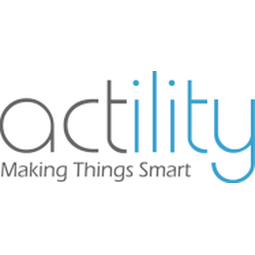
Technology Category
- Other - Battery
- Sensors - GPS
Applicable Industries
- Cities & Municipalities
- Recycling & Waste Management
Applicable Functions
- Maintenance
- Quality Assurance
Use Cases
- Smart City Operations
- Smart Parking
Services
- System Integration
- Testing & Certification
The Customer
LoRaWAN™ sensors
About The Customer
The customer in this case study is any city or municipality that is looking to transform into a smart city. These cities are facing challenges such as aging infrastructure, increasing air pollution, traffic congestion, rising energy prices, and scarcity of natural resources. They are looking for innovative solutions to manage these challenges more efficiently and sustainably. The cities are also looking to improve the quality of life for their citizens by providing better services such as efficient waste management, convenient parking, intelligent street lighting, environmental monitoring, and enhanced public safety and urban security.
The Challenge
Many cities are grappling with issues such as aging infrastructure, increasing air pollution, traffic congestion, rising energy prices, and scarcity of natural resources. The traditional methods of managing these challenges are proving to be inefficient and unsustainable. For instance, waste management companies have been operating with limited innovation in operational efficiency. Trash containers often fill up too soon, and there is no real-time information on waste bins filling level. Similarly, city parking management systems are under pressure due to high and unstable demand from users. The challenge is to fully exploit all available spaces and connect them with IoT to monitor and optimize the occupancy of parking spaces. Additionally, most cities lack real-time monitoring of street light conditions, leading to energy inefficiency and higher operating costs. Lastly, cities face environmental challenges such as air pollution, noise pollution, water safety issues, inefficient irrigation, and flood risks.
The Solution
Actility provides a unique LPWAN platform for cities, using IoT to enable new services. For waste management, low-power connected ultrasonic sensors are placed in the bins, which measure the level of waste and notify the waste management company when the container needs to be emptied. For parking management, LoRa-enabled parking sensors are deployed throughout urban areas, enabling parking operators to capture and analyze occupancy data in real-time. For street lighting, Actility provides an IoT connectivity platform for cities to drastically reduce their electricity costs, using connected lamps equipped with LoRaWAN™ sensors to adapt the lighting according to real-time traffic. For environmental challenges, IoT sensors monitor a range of environmental factors such as air quality, soil humidity, water quality, flood detection and more. Lastly, for public safety and urban security, Actility provides a unified IoT connectivity platform for smart and safe city use cases. Battery-operated sensors are installed to detect manhole related incidents, and people and assets can be equipped with trackers.
Operational Impact
Quantitative Benefit

Case Study missing?
Start adding your own!
Register with your work email and create a new case study profile for your business.
Related Case Studies.

Case Study
Turning A Stadium Into A Smart Building
Honeywell created what it called the “intelligent system” for the National Stadium in Beijing, China, turning the venue for the opening and closing events at the 2008 Summer Olympics into a “smart building.” Designed by highly controversial artist Ai Weiwei, the “Bird’s Nest” remains one of the most impressive feats of stadium architecture in the world. The 250,000 square meter structure housed more than 100,000 athletes and spectators at a time. To accommodate such capacity, China turned to Honeywell’s EBI Integrated Building Management System to create an integrated “intelligent system” for improved building security, safety and energy efficiency.
.png)
Case Study
Smart Street Light Network (Copenhagen)
Key stakeholders are taking a comprehensive approach to rethinking smart city innovation. City leaders have collaborated through partnerships involving government, research institutions and solution providers. The Copenhagen Solutions Lab is one of the leading organizations at the forefront of this movement. By bringing together manufacturers with municipal buyers, the Copenhagen Solutions Lab has catalyzed the development and deployment of next-generation smart city innovations. Copenhagen is leveraging this unique approach to accelerate the implementation of smart city solutions. One of the primary focus areas is LED street lighting.

Case Study
Buoy Status Monitoring with LoRa
The Netherlands are well-known for their inland waterways, canals, sluices and of course port activities. The Dutch Ministry of Infrastructure indicates that there are thousands of buoys and fixed items in and near water environments that would profit from IoT monitoring. One of the problems with buoys for example, is that they get hit by ships and the anchor cable breaks. Without connectivity, it takes quite some time to find out that something has happened with that buoy. Not to mention the costs of renting a boat to go to the buoy to fix it. Another important issue, is that there is no real-time monitoring of the buoys at this moment. Only by physically visiting the object on the water, one gains insight in its status.

Case Study
Barcelona Case Study
Barcelona’s heavy traffic and its associated high levels of pollution were the primary factors that motivated some companies and universities to work on strategies for improving traffic in the city centre. Bitcarrier is one of the technologies involved in the In4Mo Project, whose main objective is to develop the applications that form the core of smart mobility, one of the fundamental pillars of the smart city concept.

Case Study
China Mobile Smart Parking
Smart Parking, powered by NB-IoT technology, is making it easier for drivers to find free parking spots. Cities can better manage their parking assets and maximize the revenue available to them as a result. Drivers searching for parking create congestion and pollution by circling and hunting for available parking. Smart Parking services are able to significantly ease these problems by guiding a driver directly to a parking space.








